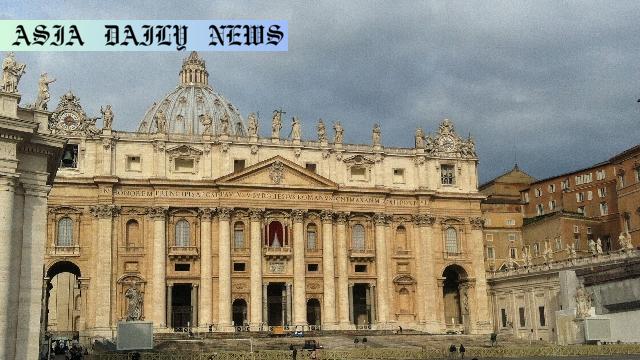Conclave set to elect Pope Francis’ successor as cardinals worldwide gather to decide.
Roman Catholic cardinals convene for a conclave to elect the next pope.
Key candidates include Cardinals Parolin, Zuppi, Tagle, and Turkson.
Ceremonial white smoke signals the election of the new pope.
Possible firsts include an Asian or sub-Saharan pope.

Introduction to the Conclave
The Roman Catholic Church is experiencing a historic moment as cardinals around the world prepare to gather for the monumental event of a conclave. The late Pope Francis, who led the church with a progressive and inclusive vision, has left a significant legacy, and the election of his successor will shape the future of the church for decades. A conclave, a centuries-old tradition, is the ceremonial electoral process in which eligible members of the College of Cardinals cast their votes to select the next leader of the global flock.
The Process of the Conclave
Following the passing of Pope Francis, the Vatican’s preparations for the conclave seem to demonstrate their firm adherence to both tradition and efficiency. The conclave typically begins 15 to 20 days after the passing of a pope, allowing sufficient time for all eligible members of the College of Cardinals—those under 80—to gather in the Sistine Chapel. The secretive voting process is steeped in symbolism, with black smoke signifying an inconclusive vote and white smoke and ringing bells heralding the election of a new pope. As the cardinals deliberate in isolation, the Vatican becomes awash in anticipation, with faithful Catholics and media outlets worldwide awaiting the announcement.
Pivotal Candidates to Watch
This particular conclave carries heightened interest due to the diversity of the leading candidates. Cardinal Pietro Parolin of Italy, a close aide to Pope Francis and the current Secretary of State, is widely regarded as a front-runner. Cardinal Matteo Maria Zuppi, also from Italy, is drawing attention for his peace-building efforts in Ukraine and Russia. Additionally, Cardinal Louis Antonio Tagle from the Philippines carries the potential to become the first Asian pope, earning him the moniker ‘Francis in Asia.’ Similarly, Cardinal Peter Turkson from Ghana, a compassionate and influential leader, could become the first sub-Saharan pope. Each candidate represents a unique vision for the Catholic Church’s direction amid growing social, environmental, and geopolitical challenges.
The Significance of the Conclave’s Outcome
The election of a new pope is not solely an internal religious matter; it carries immense global implications. The Roman Catholic Church influences the lives of over a billion adherents worldwide and plays a crucial role in shaping moral discourse, international peace, and humanitarian efforts. Choosing leaders like Cardinals Tagle or Turkson would signal a step towards increased diversity and representation within the Holy See. In contrast, electing a European cardinal such as Parolin or Zuppi could emphasize continuity of the continent’s long-standing influence over the papacy. Regardless of the outcome, the conclave is a profoundly spiritual event, embodying the hopes and prayers of millions of believers.
Conclusion
As the world waits for the ceremonial white smoke from the Sistine Chapel, the importance of this moment resonates deeply. The next pope will have an enormous task of guiding the church through complex challenges, from climate change to evolving societal norms. Whether this conclave ushers in a pope from Asia, Africa, or Europe, the decision will leave an indelible mark on the church’s legacy, showing how faith adapts to the currents of history while being rooted in steadfast tradition.
Commentary
The Unique Role of a Papal Conclave
The papal conclave is not only a sacred act steeped in tradition but also a significant event that draws attention from believers and non-believers alike. Its unique blend of spirituality and political intrigue makes it fascinating, invoking a sense of timelessness amidst a rapidly changing world. Personally, I am always struck by how this ancient process captures global attention, emphasizing the enduring relevance of the Catholic Church in our modern, interconnected societies.
Diversity and Representation in the Church
This particular conclave feels especially important because of the potential for groundbreaking representation. As a Catholic aware of the church’s vast geographical reach, the possibility of having the first Asian or sub-Saharan pope feels exciting. It signifies a shift toward inclusivity and the acknowledgment of the vibrancy of faith in regions outside Europe. Cardinal Tagle and Cardinal Turkson embody this shift, and their leadership could usher in renewed hope for believers who seek a more globalized and representative Church.
The Responsibility of New Leadership
Regardless of who is finally elected, the new pope will inherit a monumental responsibility. From addressing climate change to bridging interfaith divides and revitalizing waning participation in Western countries, the challenges are immense. There’s also the hope that the church will further progress in tackling issues such as inequality, abuse scandals, and the role of women in leadership. As someone who values the impact of faith in addressing global concerns, I sincerely hope the conclave’s decision balances tradition with the courage to embrace change where it is most needed.
Final Reflections
As the world holds its breath and looks to the white smoke from the Sistine Chapel, I find myself reflecting on the enduring power of faith to unite and inspire. Whether it’s through tradition or transformation, the papal conclave is a moment that reminds us of the Catholic Church’s central role in fostering dialogue, hope, and moral guidance. Let us pray that this new chapter for the church brings wisdom, compassion, and unity to a world in need of all three.


